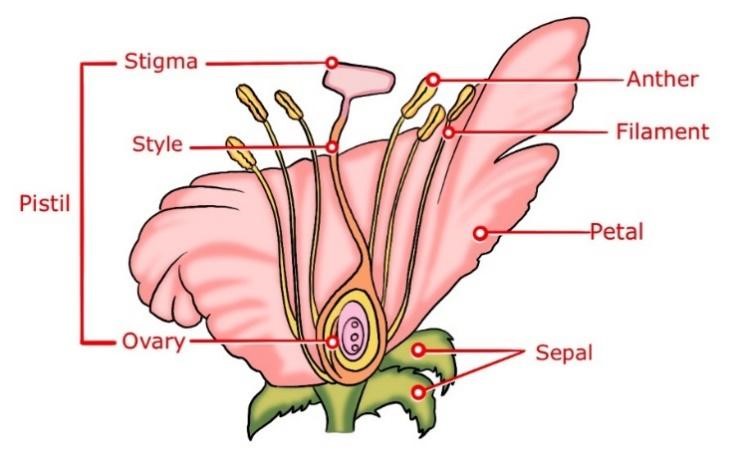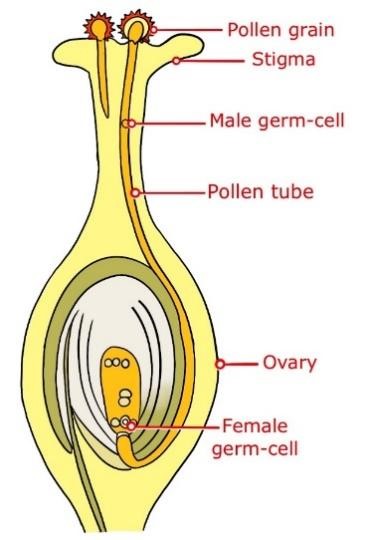Introduction
Sexual reproduction happens from the two parents’ genetic material. In the parent plant, both the male and the female sex cells known as gametes must be present. When these gametes of both male and female sex cells combine, then offspring produces. This process is known as fertilisation. Through fertilisation, seeds are produced and it contains genetic material from both the parents. Pollination is a process in which flowering plants reproduce sexually. In a flower, male sex organs are known as stamens and female sex organs are known as pistils.
Discover Unacademy UPSC Offline Centres in the following locations
During reproduction, the sexual mode of reproduction involves mixing DNA from two separate individuals. To generate new generations, both sexes (males and females) are required.
- The DNA, as well as the cellular equipment, must be copied in order to create two new cells from one
- Meiosis is a cell division process that allows this to happen
- One germ cell is huge and houses the food supplies, whereas the other is tiny and motile
- The male gamete is traditionally referred to as the motile germ cell, whereas the female gamete is referred to as the germ cell carrying the stored food

Sexual Reproduction in the Flowering Plants
- Angiosperm reproductive components can be found in flowers
- The reproductive portions of the flower, the stamens and pistil, hold the germ cell
- Stamen is the male reproductive part, and it produces dust grains that are yellowish in shading
- The female reproductive part of a flower is the pistil, which is found in the middle
It is made of three sections:
- Ovary: It is the swollen bottom part. It is made up of ovules, each of which has egg cells.
- Style: It is the middle and elongated part.
- Stigma: It is the terminal part and may be sticky to aid pollen impregnation.
- The fusion of the germ cells or fertilisation gives the zygote which can grow into a new plant
- Pollination is the process of moving pollen from the stamen to the stigma in order for fertilisation to take place.
It is of two types:
- Self-pollination: If the pollen transmission occurs within the same flower.
- Cross-pollination: If pollen from one flower is transported to another.
- Flowers can be unisexual (papaya, watermelon) if only stamens or pistil are present, or bisexual (Hibiscus, mustard) if both stamens and pistil are present
- The zygote splits multiple times after fertilisation to produce an embryo within the ovule
- The ovule develops a thick coating and eventually becomes a seed
- The ovary matures swiftly and becomes a fruit
- Germination is the process of a seed containing the future plant or embryo developing into a seedling under the right conditions
Characteristics of Sexual Reproduction
- A male and female parents are involved
- Gamete fertilisation and formation take place
- The whole sexual reproduction process is lengthy and slow
- Physically and genetically offspring are different and variation occurs


Pollination and Fertilisation
Pollination is a process in which the male gametes of pollen grains need to fuse with the eggs in the ovule. This pollination process is divided into two types-When the pollen transfer takes place between the stigma and the anther of different flowers of the same plant or the same species of the different plants is known as cross-pollination. When the pollen transfer takes place between the stigma and the anther of the same flower is known as self-pollination.
Fertilisation is the next step after pollination. The pollen has to fertilise an egg inside the stigma once it reaches the pistil. Fruits containing seeds are created during fertilisation. Fruits are different from one another. Some fruits are fleshy like watermelon and oranges. And some are dry fruits like walnuts and acorns. These are attractive fruits for various animals. Once the animals digest the fruits and expel the seeds as waste. And in this way, seeds take root and gradually grow far from the plants that produced the seeds.
Conclusion
Questions from sexual reproduction in Plants are asked in the UPSC prelims and mains as MCQs. So far we have learned in this chapter is that, during reproduction, the sexual mode of reproduction involves mixing DNA from two separate individuals. To generate new generations, both sexes (males and females) are required. The DNA as well as the cellular equipment must be copied in order to create two new cells from one. Meiosis is a cell division process that allows this to happen. One germ-cell is huge and houses the food supplies, whereas the other is tiny and motile.The male gamete is traditionally referred to as the motile germ cell, whereas the female gamete is referred to as the germ cell carrying the stored food. Ovary iis the swollen bottom part. It is made up of ovules, each of which has egg cells. Style is the middle and elongated part. And Stigma is the terminal part and may be sticky to aid pollen impregnation.Pollination is a process in which the male gametes of pollen grains need to fuse with the eggs in the ovule. Fertilisation is the next step after pollination. The pollen has to fertilise an egg inside the stigma once it reaches the pistil.
Some Important link
| UPSC Syllabus | UPSC Exam Pattern |
| UPSC Notes | UPSC Preparation Books |
 Profile
Profile Settings
Settings Refer your friends
Refer your friends Sign out
Sign out












